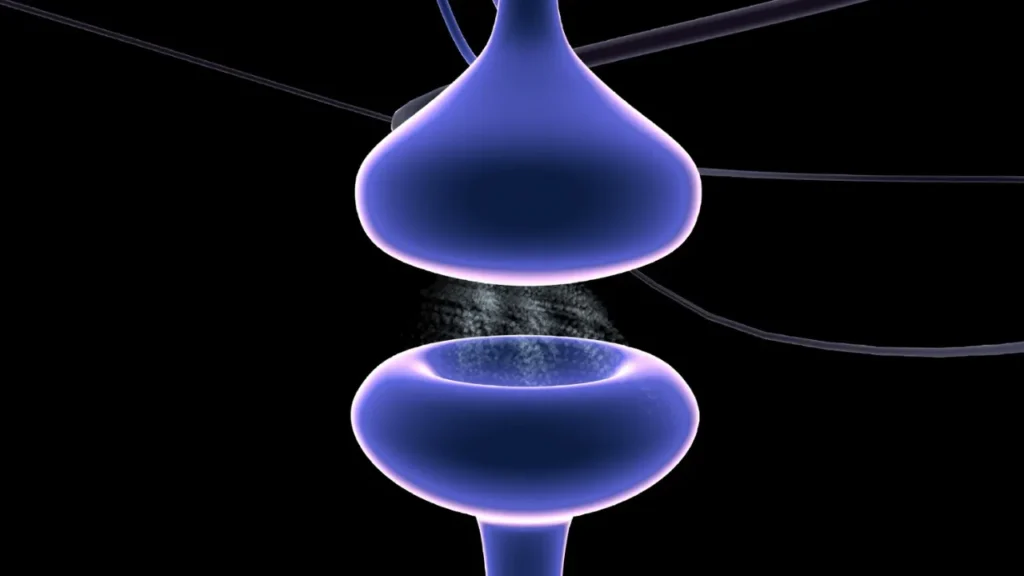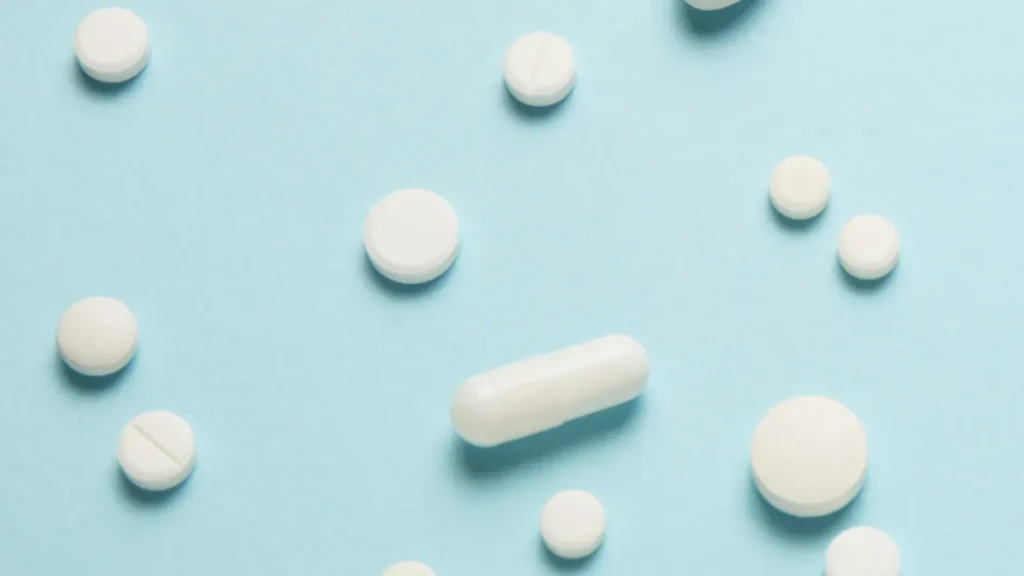The body naturally contains a substance called S-adenosyl methionine, or SAMe. It is essential to methylation processes, which are necessary for the maintenance of many biological functions, such as the methylation of DNA, the creation of neurotransmitters, and the phospholipids in membranes. Its importance also encompasses mood and cognitive processes, which makes it a substance of interest in the field of nootropic supplements for improving attention, alertness, and mental abilities. For those looking to improve their cognitive function, this article explores the nature of SAMe, its health advantages, the best dosage, any adverse effects, possible drug interactions, and responsible use. It offers a thorough overview of the supplement.
You May Also Like:
ONNIT Supplements Antarctic Krill Oil Reviewed: A Leading Memory Support Supplement
AUTUMN CROCUS: Benefits, Dosage, Side Effects, Drug Interactions, And Other Important Information
SAMe: Benefits, Dosage, Side Effects, Drug Interactions, and Other Important Information is an original (NootropicsPlanet) article.
Nature of SAMe
All live cells contain the naturally occurring substance S-adenosyl methionine (SAMe), which is crucial to the methylation processes required to sustain a number of biological processes. The biochemical process of methylation, which involves the transfer of a methyl group (one carbon atom and three hydrogen atoms) to other molecules, is essential for several biological processes, such as the synthesis of neurotransmitters, which is vital for brain function, the metabolism of phospholipids, which maintains the structural integrity of cell membranes, and DNA methylation, which controls gene expression.
SAMe play a crucial role in producing several essential chemicals, including glutathione, an antioxidant that shields cells from reactive oxygen species-induced damage, and its role in methylation.
Health Benefits of SAMe
The health benefits of S-Adenosyl methionine (SAMe) for the brain are vast, touching on various aspects of neurological function and mental health. Its impact on the brain derives from its role in methylation processes, neurotransmitter synthesis, and maintaining cellular health. These mechanisms contribute to SAMe’s potential to enhance cognitive function, mood, and overall brain health.
Enhancing Mood and Treating Depression
SAMe’s effect on mood regulation and its use as a depression treatment are two of its most important and well-studied effects. Clinical research indicates that SAMe may treat major depressive disorder just as well as certain traditional antidepressants. This impact is believed to be caused by SAMe’s involvement in the production and metabolism of neurotransmitters intimately related to mood regulation, such as dopamine and serotonin. SAMe aids in the synthesis of these neurotransmitters by contributing methyl groups, which may address imbalances that lead to depressive symptoms.
Cognitive Function and Neuroprotection
It has been demonstrated that SAMe can assist executive processes like planning and problem-solving as well as cognitive functions like memory. The precise mechanisms are complex, but one crucial aspect is that they support the fluidity of brain cell membranes, which is essential for effective cell-to-cell communication. Additionally, learning and memory are supported by SAMe’s role in preserving neurotransmitter levels at appropriate levels.
In addition, SAMe contributes to synthesizing phosphatidylcholine, an essential building block of neuronal membranes that maintains the integrity and functionality of brain cells. Additionally, it aids in the body’s regeneration of glutathione, which is one of the most significant antioxidants, and protects brain tissue from oxidative stress and damage. This regeneration is vital since it wards off cognitive decline and neurodegenerative illnesses.
Anxiety and Stress Management
Emerging research suggests that SAMe can have anxiolytic (anxiety-reducing) effects, potentially making it beneficial for individuals experiencing anxiety and stress. While the research in this area is less extensive than that for depression, the proposed mechanism involves SAMe’s capacity to modulate neurotransmitter systems involved in anxiety, including serotonin and dopamine pathways.
Detoxification and Brain Health
SAMe is integral to the liver’s detoxification processes, contributing to the overall maintenance of health by removing harmful substances from the body. This detoxification role indirectly benefits brain health by reducing the brain’s exposure to potentially neurotoxic substances that can adversely affect cognitive functions and increase the risk of neurodegenerative diseases.
Potential Role in Neurodegenerative Diseases
Early research suggests that SAMe’s neuroprotective properties may be helpful in the treatment of neurodegenerative illnesses, including Parkinson’s and Alzheimer’s disease. While research is still in its early phases, SAMe may have an effect on these disorders. Its antioxidative qualities, capacity to encourage methylation processes necessary for neuronal health, and support for neurotransmitter balance are associated with SAMe.

Chemistry of SAMe
Methionine, an important amino acid, and adenosine triphosphate (ATP), the cell’s global energy currency, are the chemical building blocks of SAMe. Methionine adenosyltransferase, an enzyme, catalyzes this process, which produces SAMe, which subsequently serves as the body’s primary source of methyl donor. Through transmethylation processes, SAMe transforms into S-Adenosylhomocysteine (SAH) by donating a methyl group to substrates such as proteins, lipids, and DNA. The cycle is then finished when SAH is converted back to methionine. SAMe’s ability to successfully participate in these methylation events results from its chemical structure, enhancing its efficacy in various metabolic pathways.
Because of its biological makeup, SAMe can also pass through the blood-brain barrier and affect brain chemistry in a big way, especially when it comes to the production and metabolism of neurotransmitters like norepinephrine, serotonin, and dopamine. These neurotransmitters are essential for controlling mood, arousal, and mental processes.
SAMe biochemical pathways are strictly regulated in the body to balance synthesis, use, and recycling according to physiological and cellular requirements. A decrease in SAMe levels can negatively affect health and require dietary changes or supplements to restore them to healthy levels. Genetic factors, lifestyle choices, or other external influences can disrupt these pathways.
Understanding SAMe’s chemistry is essential to understanding its function in health and sickness. Its involvement in critical biochemical pathways underscores the importance of maintaining adequate SAMe levels for overall well-being. It highlights the potential therapeutic applications of SAMe supplementation in addressing various health concerns.
Physiological Mechanisms of Action
Complex and multidimensional physiological mechanisms underlie the effects of SAMe on mood and cognition. SAMe affects the synthesis and metabolism of hormones, phospholipids, and neurotransmitters—all essential for healthy brain function—by contributing methyl groups. Better mood and cognitive performance are partly attributed to increased neurotransmitter production and release. Furthermore, SAMe’s function in preserving the integrity and fluidity of cell membranes may impact signal transduction pathways, which may further impact cognitive functions.


Optimal Dosage of SAMe
The ideal dosage must be established to maximize the benefits of SAMe while reducing potential hazards. The ailment being treated determines the recommended dosage. Studies on depression have employed daily doses ranging from 400 to 1600 mg; the dosage is frequently started at the lower end of the range and adjusted based on tolerance and individual response. Doses ranging from 600 to 1200 mg daily are typical for osteoarthritis. It’s critical to begin with the lowest effective dose possible and raise it gradually as needed while working with a healthcare provider.
Side Effects of SAMe
Although SAMe is generally well tolerated, some people may experience negative effects. The most typical adverse effects include headache, nausea, diarrhea, and mild sleeplessness. Usually temporary, these adverse effects are easily controlled by changing the supplement’s dosage or taking it with food. However, those who have bipolar disorder should be careful because SAMe may cause manic episodes in those who are vulnerable.


Potential Substance Interactions with SAMe
SAMe may not work as well when combined with other drugs or supplements, or it may have more negative effects. It might intensify the effects of antidepressants, resulting in serotonin syndrome, a disorder marked by elevated serotonin levels in the brain. Consequently, before beginning SAMe, people using antidepressants should speak with a healthcare professional. Furthermore, SAMe can interact with pharmaceuticals like blood thinners and anti-inflammatory treatments since it affects how some drugs are metabolized, which calls for close observation.
Best Responsible Uses of SAMe
It is crucial to utilize SAMe responsibly to improve alertness, focus, and cognitive abilities. Therefore, tolerance should be assessed by starting at the lowest dose and increasing it gradually as needed. It also entails ongoing monitoring for adverse effects or interactions with other medications. It is essential to seek advice from a healthcare practitioner before starting any new supplement regimen, particularly for people who are taking other medications or have pre-existing conditions.


SAMe:
Conclusion
SAMe supplementation shows promise in various aspects of health, including depression, osteoarthritis, liver health, and brain function. It has also been investigated for its potential benefits in managing other health conditions, including fibromyalgia, migraine headaches, and attention deficit hyperactivity disorder (ADHD). While preliminary studies have shown promising results, further research is needed to thoroughly understand the efficacy of SAMe in these areas. Furthermore, more high-quality clinical trials are needed to confirm potential health benefits and establish optimal dosages and treatment protocols. Individuals considering SAMe supplementation should consult a healthcare professional to determine its appropriateness for their health needs and conditions.
References:
- S-Adenosylmethionine (SAMe) for Neuropsychiatric Disorders: A Clinician-Oriented Review of Research. Retrieved from: https://www.ncbi.nlm.nih.gov/pmc/articles/PMC5501081/
- The effect of methionine and S-adenosylmethionine on S-adenosylmethionine levels in the rat brain. Retrieved from: https://www.ncbi.nlm.nih.gov/pmc/articles/PMC543840/
- SAMe – Uses, Side Effects, and More. Retrieved from: https://www.webmd.com/vitamins/ai/ingredientmono-786/same
Important Note: The information contained in this article is for general informational purposes only, and should not be construed as health or medical advice, nor is it intended to diagnose, prevent, treat, or cure any disease or health condition. Before embarking on any diet, fitness regimen, or program of nutritional supplementation, it is advisable to consult your healthcare professional in order to determine its safety and probable efficacy in terms of your individual state of health.
Regarding Nutritional Supplements Or Other Non-Prescription Health Products: If any nutritional supplements or other non-prescription health products are mentioned in the foregoing article, any claims or statements made about them have not been evaluated by the U.S. Food and Drug Administration, and such nutritional supplements or other health products are not intended to diagnose, treat, cure, or prevent any disease.
